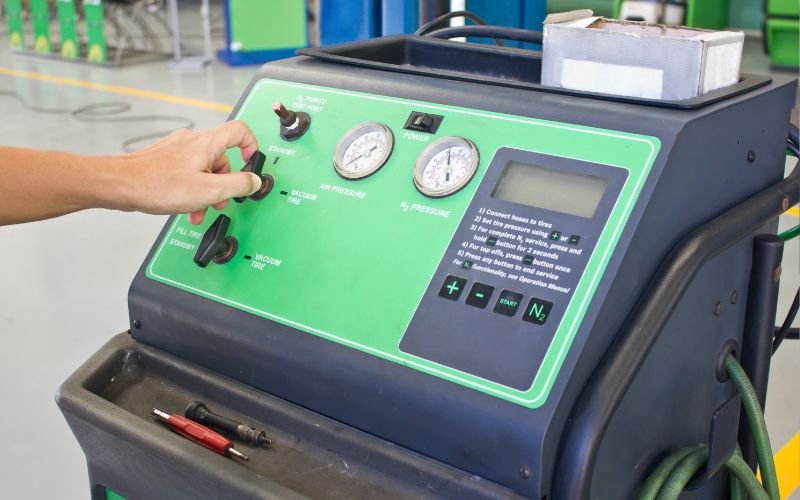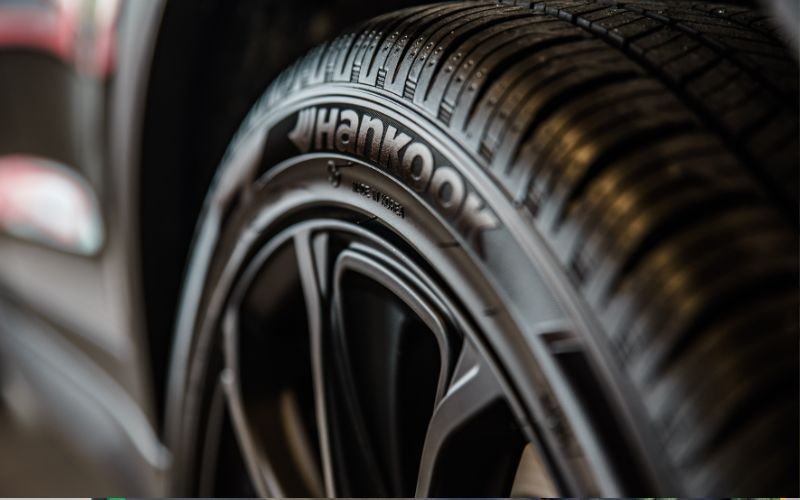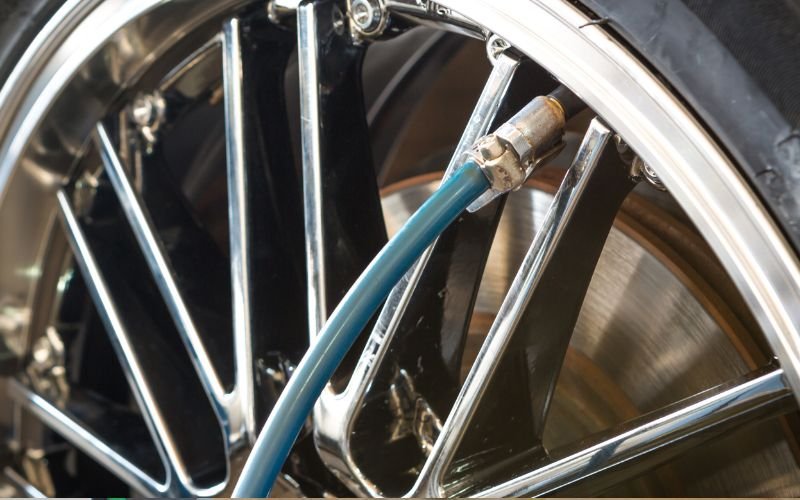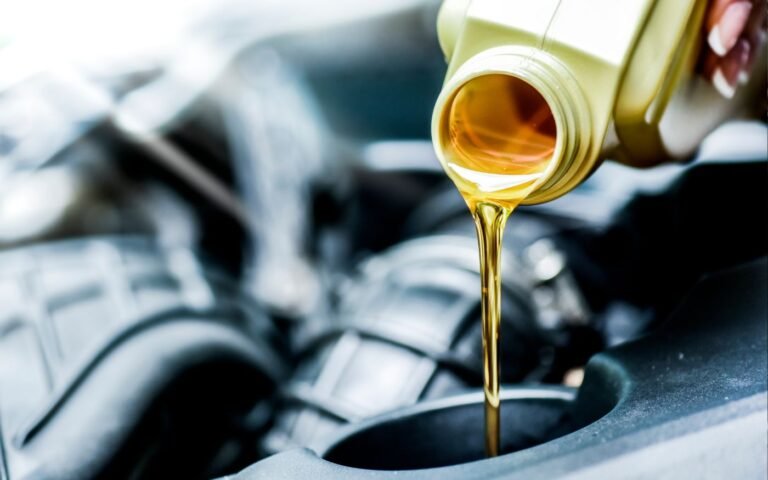Top Benefits of Using Nitrogen-Filled Tires Today
Nitrogen Auto filled tires have become a hot topic in the automotive maintenance world, particularly as drivers seek ways to enhance safety, improve fuel efficiency, and prolong tire life. While standard compressed air has been the go-to inflation method for decades, nitrogen tire inflation is quickly becoming a preferred alternative for both everyday drivers and performance enthusiasts. But what makes nitrogen different? And is it truly better than air?
In this comprehensive guide, we will explore everything from the science behind nitrogen in tires to its real-world benefits, costs, myths, and whether it is right for your vehicle. Whether you drive a sedan, SUV, performance car, or manage a fleet of trucks, this article breaks it all down.
What Are Nitrogen-Filled Auto Tires?
Nitrogen-filled tires are simply tires inflated with nitrogen gas instead of regular compressed air. Since air already contains about 78% nitrogen, some may wonder what the difference is. The key lies in purity and performance. In most nitrogen tire inflation setups, the gas used is typically 93;99% pure nitrogen, achieved through specialized filtration systems.
This increased nitrogen concentration offers several physical and chemical advantages over traditional air, especially when it comes to pressure retention, temperature stability, and long-term tire health.
How Nitrogen Differs from Regular Air in Tires
To appreciate the benefits of nitrogen, it is important to understand its differences from compressed air:
| Property | Compressed Air | Pure Nitrogen |
| Contains moisture | Yes | No |
| Oxygen content | High | Minimal |
| Leaks through rubber | Faster | Slower |
| Reacts with rubber | Yes (oxidation) | No |
| Pressure fluctuations with temperature | High | Low |
| Available at gas stations | Yes | Limited |
Nitrogen is a dry, inert gas with larger molecules than oxygen. It does not easily permeate through rubber, and it resists moisture and oxidation, reducing the internal corrosion of wheels and pressure loss over time.
The Key Benefits of Nitrogen Tire Inflation
1. Better Tire Pressure Retention
Nitrogen molecules are larger than oxygen, meaning they escape more slowly through the microscopic pores in the rubber. This helps maintain consistent tire pressure over a longer period; a key benefit for safety, fuel efficiency, and tread life.
2. Improved Fuel Economy
Underinflated tires reduce fuel efficiency by increasing rolling resistance. Since nitrogen inflation helps retain optimal pressure, it indirectly contributes to better miles per gallon (MPG), especially for high-mileage drivers and fleet operators.
3. Longer Tire Life
By reducing internal oxidation and keeping pressure levels stable, nitrogen inflation minimizes uneven wear, flat spotting, and tread degradation, extending the overall lifespan of your tires.
4. Reduced Oxidation and Corrosion
Oxygen and moisture inside a tire can corrode both the steel belts in the tire and the aluminum alloy wheels. Nitrogen’s dryness eliminates this risk, making it ideal for preserving your tire’s integrity over time.
5. More Stable Pressure Under Temperature Changes
Nitrogen is less reactive to temperature swings compared to air, meaning your tire pressure stays more consistent in extreme weather or high-speed driving, making it especially useful for performance vehicles or long-distance trucking.

Who Should Consider Nitrogen for Their Tires?
Not every driver will see the same level of benefit, but nitrogen-filled automobile tire are particularly beneficial for:
- High-performance vehicle owners (e.g., sports cars, motorcycles)
- Frequent highway travelers
- Fleet and commercial truck operators
- Drivers in extreme climates (hot or cold)
- Owners of rarely-used or stored vehicles
- Aviation, racing, and off-road vehicles
If you are someone who values long-term savings, safety, and convenience over the minor upfront cost, nitrogen may be worth it.
Common Myths and Misconceptions
Myth #1: You ca not mix air with nitrogen.
Truth: You can mix air and nitrogen without harming the tire. However, mixing will reduce the nitrogen purity and its benefits. Ideally, a tire should be purged and refilled to maintain purity above 93%.
Myth #2: Nitrogen never leaks.
Truth: While nitrogen leaks slower than air, it’s not leak-proof. You should still check your pressure monthly.
Myth #3: Nitrogen inflation boosts tire pressure.
Truth: Nitrogen does not increase tire pressure; it simply holds it more consistently over time.
Cost of Nitrogen Tire Fill
The cost of nitrogen inflation varies based on location, service provider, and vehicle type. Here’s a general breakdown:
| Service Type | Cost Estimate (USD) |
| First-time nitrogen fill (4 tires) | $15;$30 |
| Refill top-off | $3;$10 per tire |
| Nitrogen generator (DIY kit) | $300;$1,200 (for fleets) |
While this is more than free compressed air, many drivers consider the long-term value to outweigh the upfront cost, especially in commercial or high-performance applications.
Where Can You Get Nitrogen Tire Service?
Nitrogen is not available at every corner gas station, but it is becoming more common. You can find nitrogen tire refill stations at:
- Tire and auto service chains (Discount Tire, Costco, Mavis, etc.)
- Some car dealerships
- Aviation and motorsport service providers
- Fleet maintenance garages
- Specialized nitrogen stations (search “nitrogen tire fill near me”)
DIY Nitrogen Inflation Kits: Worth It?
If you manage a commercial fleet or want full control, consider a portable nitrogen generator. These units extract nitrogen from ambient air and allow consistent, on-site inflation. While expensive upfront, they’re cost-effective over time for:
- Trucking companies
- Racing teams
- Auto repair shops
- Car dealerships
Performance Gains: Myth or Measurable?
While nitrogen does not make your car faster, it can impact performance indirectly by stabilizing tire pressure during aggressive driving, preventing traction loss, and avoiding blowouts. For motorsports and racing, where every PSI counts, nitrogen is a staple, not a luxury.
In daily driving, the performance gain is more about consistency than speed. If you drive long distances or live in an area with frequent temperature changes, you will notice smoother handling and better grip.
Environmental Benefits of Nitrogen-Filled Auto Tires
From an eco-friendly perspective, nitrogen helps in:
- Reducing tire waste (via longer tread life)
- Improving fuel economy, which reduces emissions
- Minimizing metal oxidation, leading to fewer wheel replacements
While the impact is modest per vehicle, it becomes significant when applied fleet-wide or at scale.
Pros and Cons of Nitrogen in Tires
Pros
- Slower pressure loss
- Better fuel efficiency
- Reduced oxidation and corrosion
- Enhanced safety at high speeds
- Improved tire life
- Stable pressure during temperature shifts
Cons
- Not widely available everywhere
- More expensive than compressed air
- Minimal benefit for short-distance or low-speed drivers
- Still requires pressure monitoring
Real-World Scenarios: Should You Switch?
Let’s break down who will benefit the most:
| Driver Type | Nitrogen Benefit Level |
| Urban commuter (short trips) | Low |
| Long-distance commuter | Medium;High |
| Commercial truck driver | High |
| Performance car owner | High |
| RV/Trailer user | Medium |
| Motorcycle enthusiast | Medium |
| Garage-kept classic car | High |
Safety Insights: Blowout Prevention & TPMS Accuracy
Nitrogen maintains a more stable tire pressure, which reduces the risk of:
- Sudden blowouts due to heat expansion
- Low-pressure TPMS (Tire Pressure Monitoring System) alerts
- Uneven wear due to pressure drops
For vehicles with advanced TPMS, nitrogen ensures the readings stay accurate for longer, reducing maintenance interruptions.
Tire Manufacturers & OEMs on Nitrogen Use
Some automakers and tire manufacturers do endorse nitrogen inflation for premium tires, high-end models, and specific use-cases. Brands like Goodyear, Michelin, Bridgestone, and Pirelli acknowledge nitrogen’s role in professional applications, though they often state that it’s optional for general consumers.
The Science Behind Nitrogen’s Stability
Here’s why nitrogen is scientifically superior to air in this context:
- Inert gas: Does not oxidize rubber or metals
- Dry: Prevents moisture-related corrosion
- Larger molecules: Leak more slowly through rubber pores
- Lower heat expansion: Less pressure fluctuation with temperature
This trifecta of traits makes it ideal for aircraft, racecars, and fleet vehicles, and increasingly, passenger cars.
How to Switch from Air to Nitrogen
Switching is simple:
- Purge your existing air (most shops will do this)
- Refill with high-purity nitrogen (aim for 93–99%)
- Label your tires with green valve caps or stickers
- Top-off only with nitrogen (or re-purge if needed)
- Check pressure regularly (monthly)
Final Verdict: Is Nitrogen Right for You?
Choose nitrogen-filled Rubber tires if you:
- Drive long distances frequently
- Want lower tire maintenance
- Manage a fleet or performance vehicle
- Store your vehicle for long periods
- Live in an area with extreme temperature swings
Stick with air if you:
- Drive mostly in the city
- Prioritize convenience over optimization
- Do not want to pay extra for tire inflation

Wrap Up:
Nitrogen-filled tired offer a scientifically backed, performance-enhancing alternative to traditional air inflation. While not necessary for every driver, they provide tangible benefits for those seeking consistency, fuel savings, and longer tire life. Whether you’re a DIY car owner or managing a fleet, nitrogen may be the upgrade your tires didn’t know they needed.
In a world where small optimizations add up, in safety, performance, and environmental impact, nitrogen tire inflation is more than just hot air.
FAQs
Can I switch back to air after using nitrogen?
Yes. There’s no harm in reverting to regular air, though you will lose the benefits of high nitrogen purity.
Do nitrogen tires require less maintenance?
You will still need to check tire pressure monthly, but refills are less frequent.
Is nitrogen dangerous in tires?
Not at all. Nitrogen is non-toxic and inert. It is safer due to lower pressure fluctuation.
How often do I need to refill nitrogen tires?
Typically every 2,3 months, compared to monthly for air. Leaks still occur, but more slowly.
Will nitrogen improve my car’s handling?
Yes, indirectly. Stable pressure helps with better grip, traction, and even tread wear.
Citation:
Continental Tires. (n.d.). Nitrogen in tires. Continental Tires. Retrieved July 21, 2025, from https://www.continental-tires.com/products/b2c/tire-knowledge/nitrogen-in-tires/







